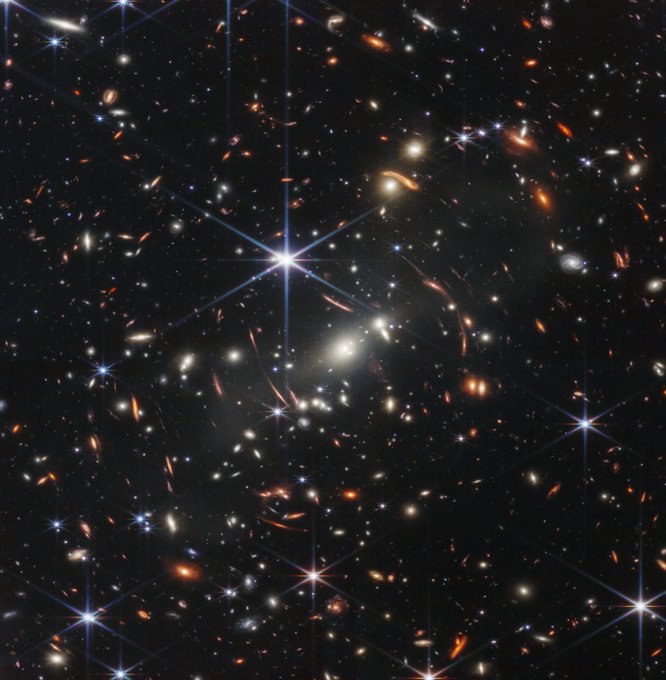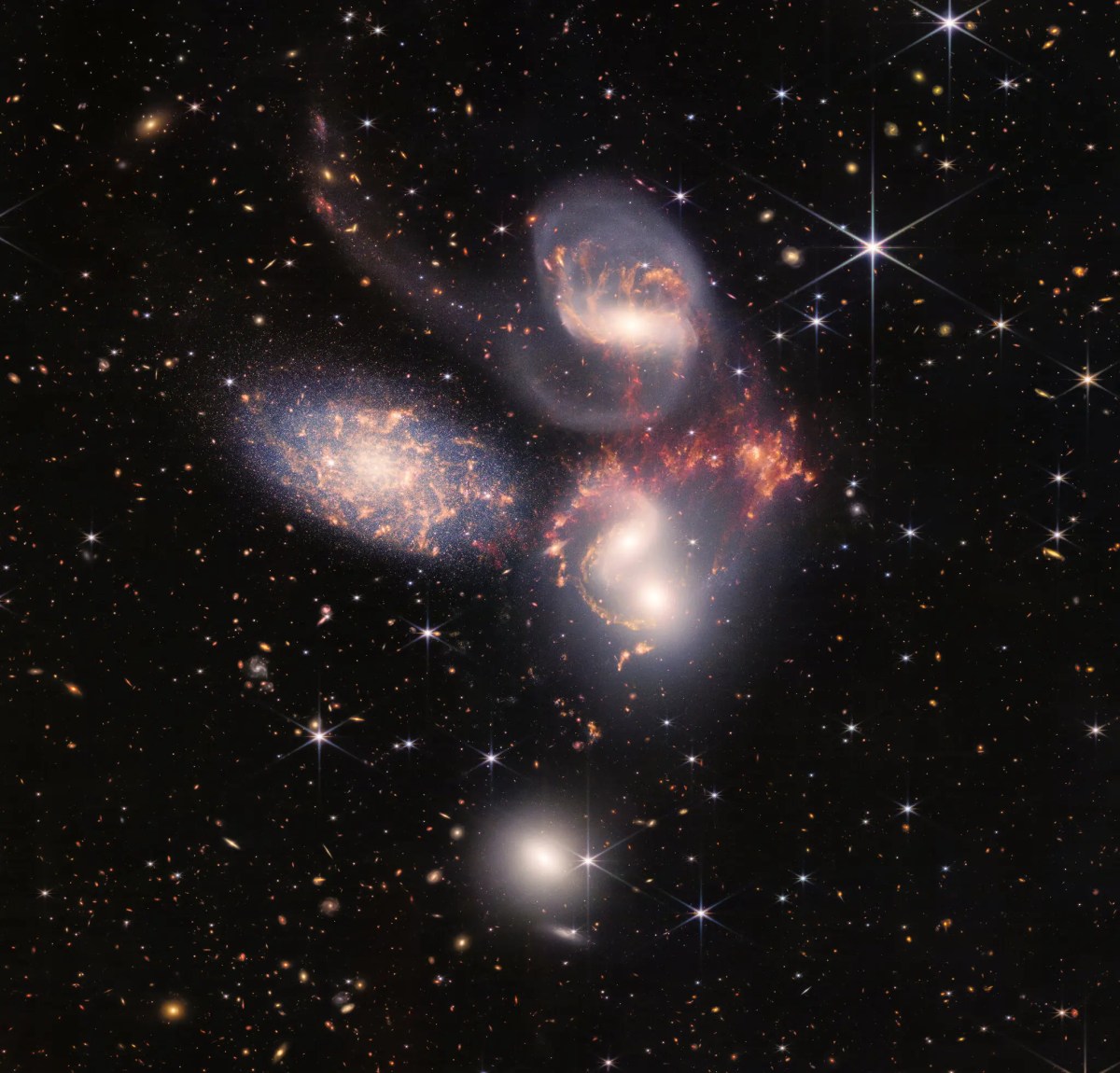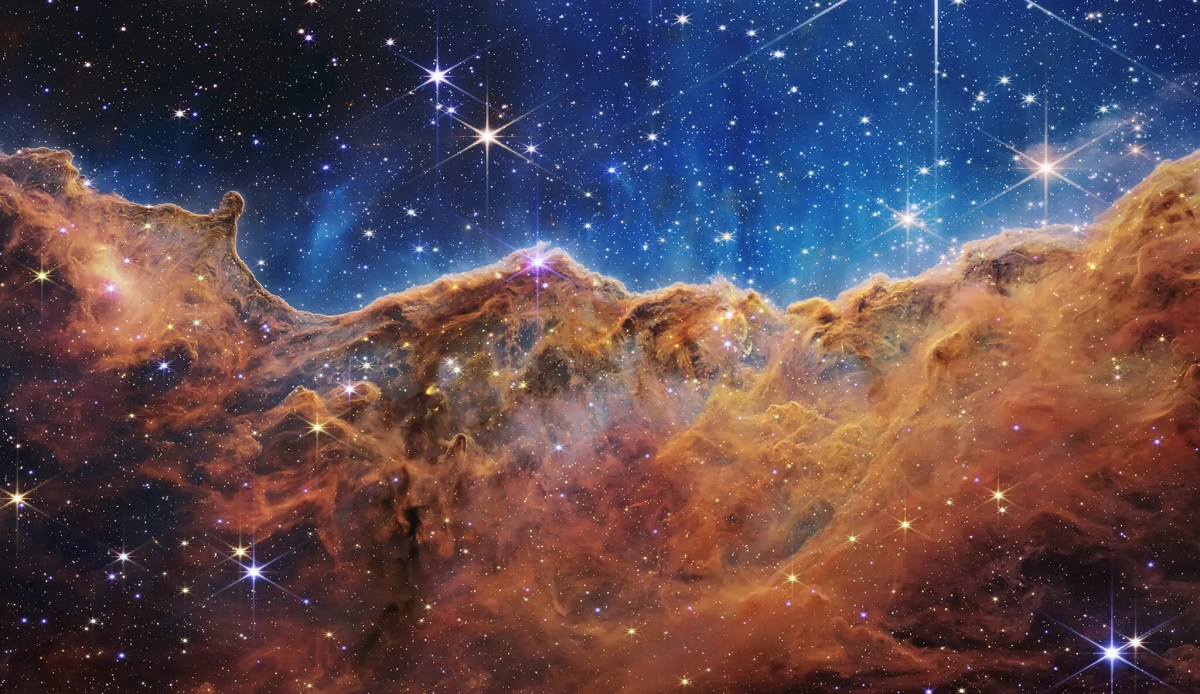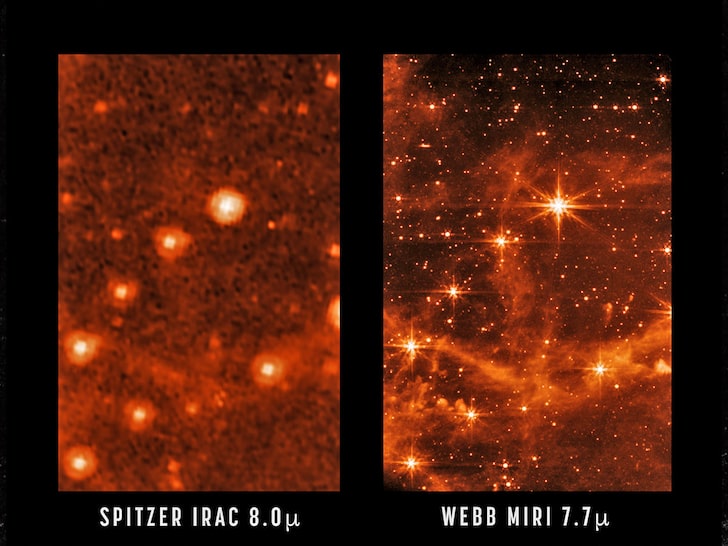For the first time, humanity is able to feast its eyes on the far reaches of space — in the clearest, sharpest photos ever taken of the universe around us.

After U.S. President Joe Biden had the honour of unveiling the first full-coloured photograph captured by the $10-billion James Webb Space Telescope (JWST) on Monday, NASA released the full slate of beauty shots Tuesday morning.
The images released Tuesday include a view of a giant gaseous planet outside our solar system, two images of a nebula where stars are born and die in spectacular beauty, and an update of a classic image of five tightly clustered galaxies that dance around each other.
Gregory Robinson, director of the James Webb Space Telescope program, took the stage Tuesday morning, talking about the image revealed by President Biden yesterday. “You ain’t seen nothing yet,” he added, talking up the images.

The first photo revealed Tuesday shows a very hot, gaseous exoplanet named WASP-96b.
The planet, which is approximately 1,000 light years away from Earth and not in our solar system, is about the size of Jupiter but with half the mass. The JWST captured the distinct signature of water in its atmosphere, along with evidence of clouds and haze surrounding the puffy gas planet orbiting a distant Sun-like star.
NASA says the discovery surpasses the Hubble Space Telescope’s abilities in observing exoplanets by providing a “detailed observation (that) marks a giant leap forward in the quest to characterize potentially habitable planets beyond Earth.”


The second image revealed shows a planetary nebula – a.k.a. the death of a star.
It’s known as the Southern Ring Nebula, and the image of the jaw-dropping cosmic body was captured in mid-infrared wavelengths, showing when the star spewed its own atmosphere into space “like an expanding soap bubble.” The only part of the star left behind was a scalding-hot core known as a white dwarf, in the centre of the image.
According to NASA, the image was captured approximately 2,500 light-years away.

Image number three focuses in on Stephan’s Quintet, a cluster of galaxies that is so compact, two of them are merging into one.
The stunning photo shows five swirling galaxies grouped together in the largest photo captured by the JWST to date. Using powerful infrared vision and extremely high resolution, the massive mosaic was created using almost 1,000 separate images. NASA says the photograph provides new insights into how galactic interactions may have driven galaxy evolution in the early universe.
Also seen in the photo are brilliant clusters of young stars and starburst regions of fresh star births. Sweeping tails of gas, dust and stars are the result of gravitational interactions between the galaxies, and one of the galaxies can be seen smashing through the cluster in the breathtaking picture.

The final image presented Tuesday — and perhaps the most stunning of all — shows the Carina Nebula in all its glory.
The sparkly picture shows the birth of a star, with what look like mountains and valleys of the Cosmic Cliffs on full display. Captured in infrared light, NASA says the picture shows off never-before-seen glimpses of previously invisible areas of star birth.
The seemingly three-dimensional photo might look like mountain cliffs, but what you’re seeing is the edge of a giant, gaseous cavity within the star formation, caused by the intense ultraviolet radiation and stellar winds from extremely massive, hot, young stars located in the centre of the bubble, above the area shown in this image.

NASA hosted a live Q&A with members of the media and a selection of the experts from the agency, as well as representatives of the Canadian Space Agency and European Space Agency, which made contributions to the telescope and its mission.
The scientists in the news conference spoke of how revolutionary the JWST images are. Jane Rigby, the JWST operations project scientist, said “Personally, I went and had an ugly cry,” when she was first privy to the early data and saw how well the telescope was performing.
Martin Barstow, Professor of Astrophysics and Space Science at the University of Leicester, spoke with Global’s Alan Carter Tuesday, saying he’s “absolutely knocked out” by the data beamed back from the JWST.
“What surprised me is the detail. In theory, you know what’s going to happen when you put a big telescope in space and we know it’s bigger than Hubble, but somehow the reality of how detailed these images are, how spectacular the resolution is, just surpasses everybody’s expectations.”
Barstow added that Tuesday’s photos are “a very small sample of what’s to come,” saying that scientists expect the telescope to be operational for a decade or more.
“So I think if you think about that length of time, it’s is going to be a true revolution. Astronomy will be completely transformed by the James Webb Space Telescope, and our knowledge of the universe will change out of all recognition to what it is now. I think that is a pretty easy prediction to make.”
The photo first revealed by Biden on Monday was a “deep field” image, filled with stars and massive galaxies in the foreground distorting the light of the objects behind, telescoping them and making faint and extremely distant galaxies visible.
Part of the image consisted of light from not too long after the Big Bang.

“If you held a grain of sand on the tip of your finger at arm’s length, that is the part of the universe that you’re seeing,” NASA administrator Bill Nelson told viewers as he explained the image.
“What you’re seeing are galaxies, galaxies shining around other galaxies, and just a small little portion of the universe.”
As far as the JWST’s ability to discover life outside our planet, Barstow told Global News “it’s possible, but not guaranteed.”
Barstow said the exact right circumstances would have to occur on other planets to sustain life and the chance of finding them “isn’t particularly high.” Because of that, we “may have to wait for the next generation, the Super Webb telescope, even bigger, to actually find life.”
The JWST is the successor to the Hubble Space Telescope, which has not only provided stunning images, but has also been vital in providing scientific knowledge about our universe and its origins.
The JWST has a much larger primary mirror than Hubble (2.7 times larger in diameter, or about six times larger in area), giving it more light-gathering power and greatly improved sensitivity over the Hubble.
The JWST launched, and there were no second chances — its extremely distant location in the solar system makes it impossible for human crews to visit for replairs.
But the telescope’s massive sunshield, with its 107 restraints holding it in place, was released correctly and everything has gone according to plan.
Until now, we’ve been treated to small glimpses of the JWST’s optical brilliance.
In May, the telescope beamed back a round of test pictures showing off stunning images of a neighbouring satellite galaxy called the Large Magellanic Cloud. When compared with previous images captured by the Spitzer Space Telescope, the results are astonishing.
“It’s not until you actually see the kind of image that it delivers that you really internalize and go ‘wow!’” said the University of Arizona’s Marcia Rieke, chief scientist for Webb’s near-infrared camera, at the time. “Just think of what we’re going to learn.”
And in March, the telescope handed in a spectacular star photo to NASA, passing its first assignment with flying colours.
The telescope alignment evaluation image, focusing in on a star called 2MASS J17554042+6551277, blew researchers’ hair back.
“We said last fall that we would know that the telescope is working properly when we have an image of a star that looks like a star,” Lee Feinberg, Webb optical telescope element manager at NASA’s Goddard Space Flight Center, told Cosmos magazine at the time.
“The performance is as good if not better than our most optimistic prediction.”
Thomas Zurbuchen, NASA’s science mission chief, said that with the new telescope, the cosmos is “giving up secrets that had been there for many, many decades, centuries, millennia.”
“It’s not an image. It’s a new worldview that you’re going to see,” he said during a recent media briefing.
Zurbuchen said when he saw the images he got emotional and so did his colleagues.
“It’s really hard to not look at the universe in new light and not just have a moment that is deeply personal.”
— With files from The Associated Press















Comments